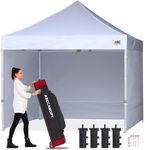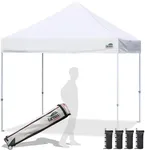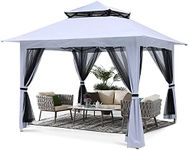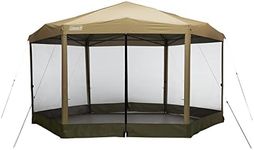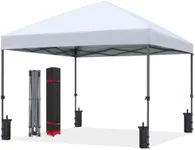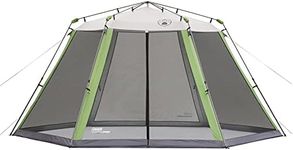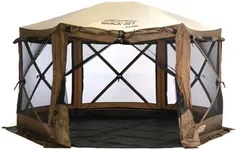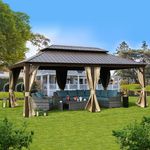Buying Guide for the Best Rated Portable Gazebo
Choosing the right portable gazebo involves considering several factors to ensure it meets your needs. A portable gazebo can provide shade and shelter for outdoor activities, making it a valuable addition to your gear. To make an informed decision, you should understand the key specifications and how they align with your intended use. Here are the main aspects to consider when selecting a portable gazebo.SizeThe size of a portable gazebo is crucial as it determines how much space you will have underneath it. Gazebos come in various sizes, typically measured in feet or meters. Smaller gazebos (6x6 feet) are suitable for intimate gatherings or small spaces, while larger ones (10x10 feet or more) can accommodate bigger groups and more furniture. Consider the number of people you plan to shelter and the space available at your location to choose the right size.
MaterialThe material of the gazebo affects its durability, weight, and weather resistance. Common materials include polyester, canvas, and polyethylene for the canopy, and steel or aluminum for the frame. Polyester is lightweight and water-resistant, making it easy to transport. Canvas is more durable but heavier. Polyethylene is waterproof and UV-resistant. Steel frames are sturdy but heavier, while aluminum frames are lighter and resistant to rust. Choose materials based on the weather conditions you expect and how often you plan to move the gazebo.
Ease of SetupEase of setup is important, especially if you plan to use the gazebo frequently or move it around. Some gazebos come with a pop-up design that allows for quick and easy assembly without tools, while others may require more time and effort to set up. Look for features like pre-attached frames, clear instructions, and minimal parts to make the setup process smoother. If you often set up alone, a pop-up gazebo might be the best choice.
Weather ResistanceWeather resistance refers to how well the gazebo can withstand various weather conditions such as rain, wind, and sun. Look for features like waterproof or water-resistant canopies, UV protection, and wind vents. Waterproof canopies will keep you dry during rain, while UV protection will shield you from harmful sun rays. Wind vents help to stabilize the gazebo in windy conditions. Consider the typical weather in your area and choose a gazebo that offers the necessary protection.
PortabilityPortability is a key factor if you plan to transport the gazebo frequently. This includes the weight of the gazebo, the presence of a carrying case, and how compact it is when folded. Lighter gazebos are easier to carry, but they may be less durable. A carrying case with wheels can make transportation more convenient. Check the folded dimensions to ensure it fits in your vehicle or storage space. Choose a gazebo that balances portability with durability based on your travel and storage needs.
StabilityStability is essential to ensure the gazebo remains secure and upright, especially in windy conditions. Features that enhance stability include sturdy frames, secure anchoring systems like stakes and guy ropes, and weighted bags. Steel frames tend to be more stable than aluminum, but they are heavier. Ensure the gazebo comes with adequate anchoring options and consider purchasing additional weights if you expect to use it in windy areas. Choose a gazebo with the right balance of stability and ease of use for your typical environment.
